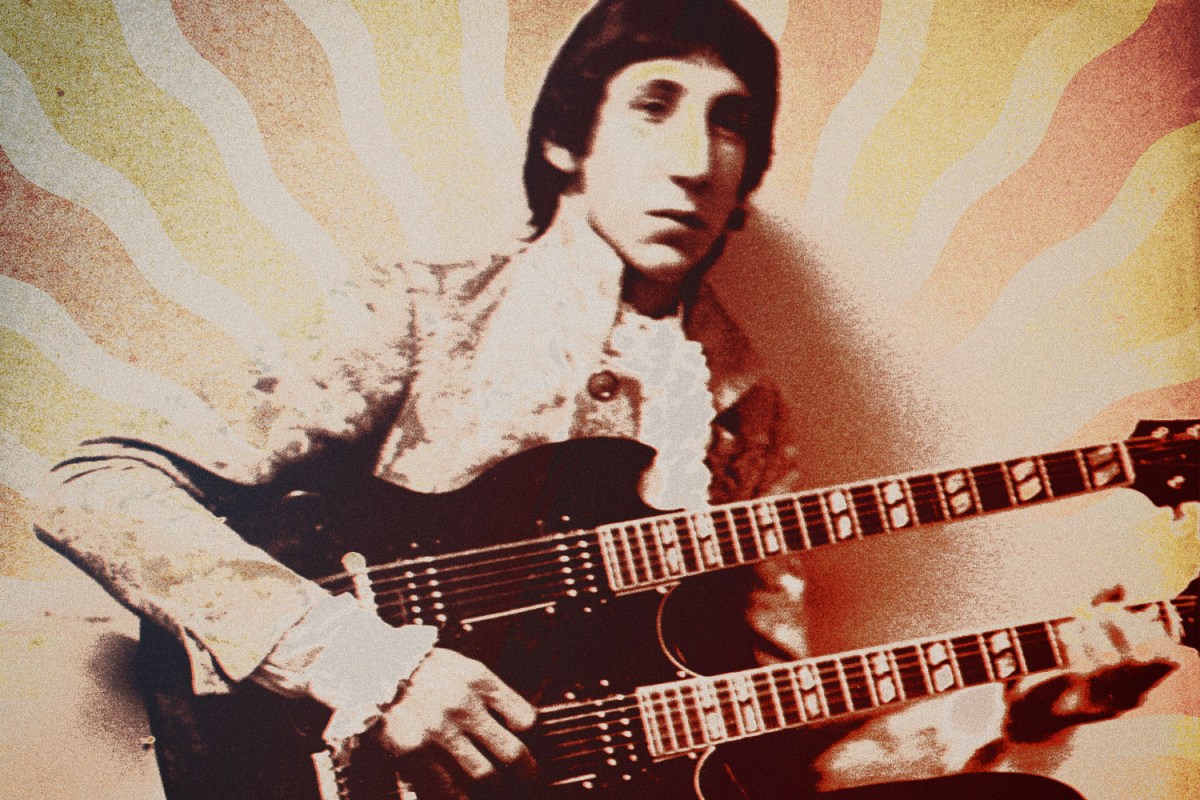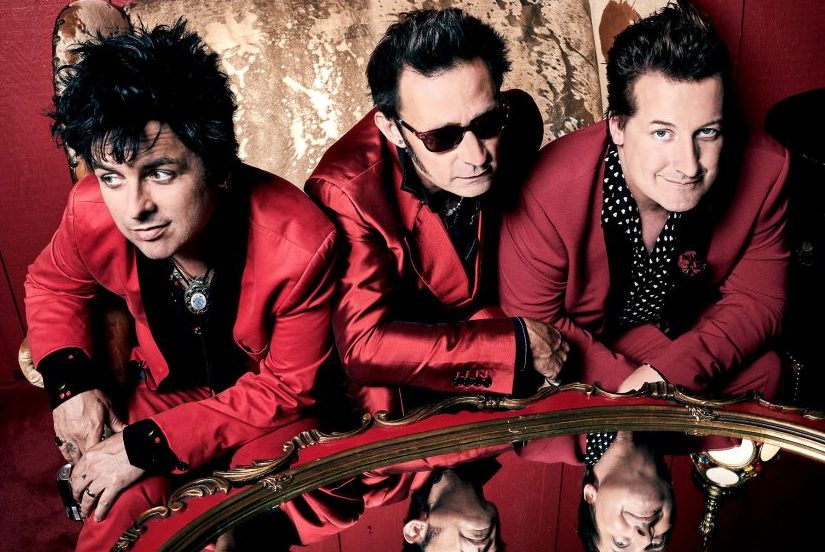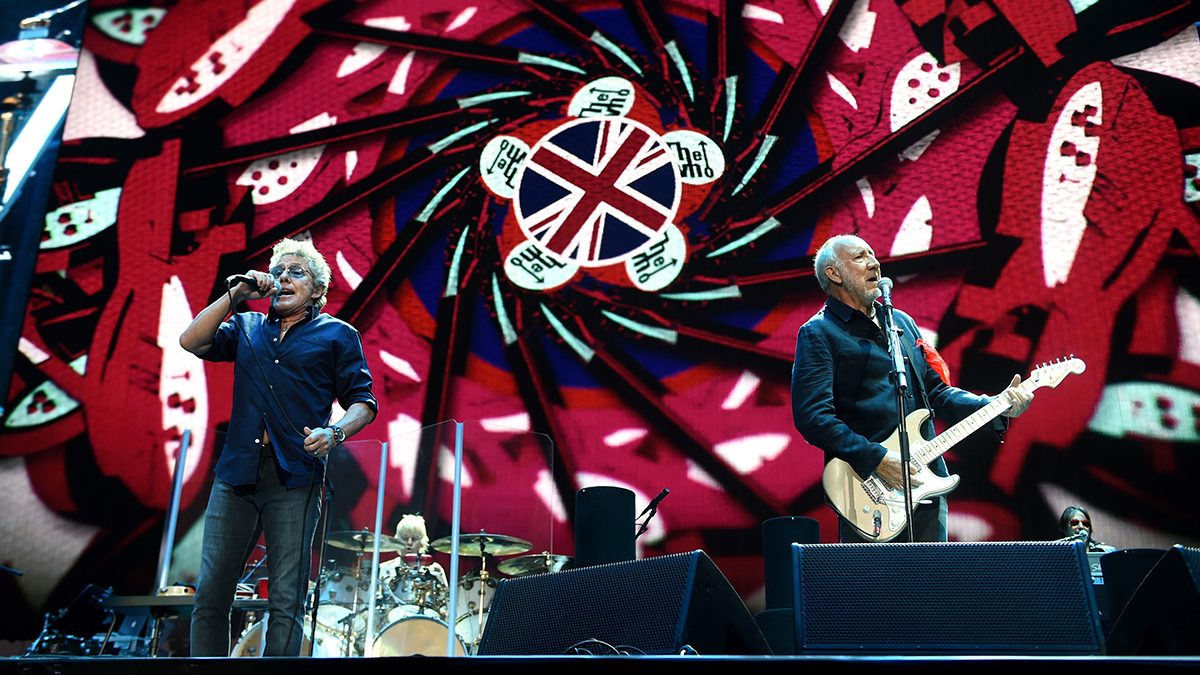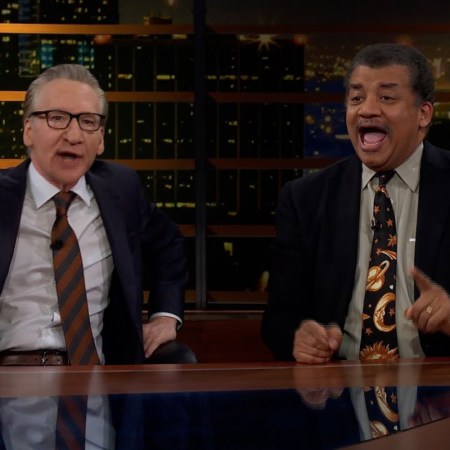As great as The Who Sell Out turned out to be — setting a standard as one of the first true concept albums as well as becoming viewed as both a pop-art masterpiece and the turning point in The Who’s career — even Pete Townshend thinks it could have been better.
“The songs we recorded in the six months after the album came out were better,” Townshend, the band’s guitarist and principal songwriter tells InsideHook. “If our label — who were also our managers, by the way — had just waited, maybe it could have been our greatest album. It’s an interesting thought, isn’t it?”
Ultimately, of course, The Who Sell Out came to be seen as a one of the band’s best. Released in December 1967, it elevated The Who, largely a singles band up to that point, into a league with the Beatles and the Rolling Stones.
“No one who saw The Who at that time could deny that they were the best live band going,” recalls Richard “Barney” Barnes, Who biographer and Townshend’s art school roommate who also named the group. “Even the biggest Kinks fan, if the Kinks and The Who were both playing in town, would go see The Who over the Kinks. They were a real show when no one else was putting on a show. And that album catapulted them into that rarified company.”
Out now in a hugely expanded, super deluxe box set — 112 tracks that include both the mono and stereo mixes of the original album, plus singles and B-sides from the era, as well as the band’s post-Sell Out /pre-Tommy recordings, and Pete Townshend’s demos from the period —The Who Sell Out is nothing if not a band reinventing itself.
In place of the group’s early, My Generation-era mod leanings are a Swinging London pop-art sensibility, with Townshend’s most fascinating compositions up to that point linked together by advertising jingles and radio announcements paying tribute to mid-’60s England’s all-important pirate radio, all wrapped up in one of the greatest album sleeves from the golden age of rock and roll. In fact, in the context of the new box set, The Who Sell Out can now been seen as the origin story of everything The Who would later become in the aftermath of the huge success of Tommy, the band’s appearance at Woodstock and its Live at Leeds album.
But in 1967, as one of the most in-demand live acts in the world, The Who were running themselves ragged, shoehorning recording sessions in between a relentless schedule of shows, Barnes recalls. “How they accomplished anything is beyond me,” he says.
Meanwhile, Kit Lambert, who co-managed The Who with his partner Chris Stamp, had installed the band’s lead guitarist in an apartment in Knightsbridge, complete with a crude recording studio, where Townshend had begun exploring the art of songwriting in just about every manner, if not with an eye toward writing hit singles, or even, necessarily, music for The Who.
“I think I was just writing for myself and hoped that if I wrote maybe 20 or 30 or, on a good run, 40 pieces of music, at least 20 would get recorded and then we could handpick maybe 10 to 12 for an album,” Townshend recalls. “It was like throwing shit at the wall.”
The process had yielded an undeniable classic, but not much else that Townshend deemed worthy of release.
“I would write for myself, to have fun with it, and even ‘I Can See for Miles’ is probably one of those songs that I wrote for me, not for the band,” he says.
The Who’s managers, Lambert and Stamp, also ran Track Records, the band’s label — a conflict of interest between the group’s creative and business sides.
“It wasn’t ethical, of course it wasn’t,” Barnes says. “But Kit and Chris didn’t think it was going to last — none of us did — and they had this great songwriter, and Keith Moon, who was a publicist’s dream, and they were doing what they could to keep things going as long as they could. But they were hugely important, as important as Brian Epstein was to the Beatles or Andrew Loog Oldham was for the Stones, and I think that sometimes gets forgotten.”
“Chris Stamp, our manager, told me, ‘This album is coming out whether you like it or not,’” Townshend recalls. “I said, ‘Well, let’s try to dress it up in some way.’”
Worried that the material wouldn’t hold up against the remarkable albums — then new territory for pop bands — being released at the time, which included the Beatles’ Sgt. Pepper’s Lonely Hearts Club Band, the Jimi Hendrix Experience’s Are You Experienced? and so many others, Townshend says Stamp’s pre-Christmas deadline led to a brilliant idea, even if it did arise out of near-desperation.
“We were walking into the studio with a) not enough songs for an album, and b) most of them which were songs I had written for fun,” he says. “The only way that I felt that we could save the record was to turn it into a fun exercise, and so the idea of the commercials — which came from a brainstorm session between me and Chris Stamp — became the way to do that.”
With pirate radio ruling the popular culture in the UK at the time thanks to boats moored off the English coast broadcasting pop music night and day, the album would become an homage to everything the BBC was not.
“I don’t know if Americans can understand how significant pirate radio was, but it was completely driving the culture, at least in London,” Barnes says. “And it was perfect for what The Who was all about: pop art.”
“The BBC wasn’t playing any tunes,” Townshend says flatly at the memory. “Pirate radio was everything. It put us on the map in a big, big way. It helped everybody.”
The radio concept also allowed for outsized creative input from bassist John Entwistle and drummer Keith Moon, who were deputized into creating many of the jingles that linked Townshend’s pop songs and created the unmistakable feel of a live radio broadcast, in turn making The Who Sell Out one of rock’s very first concept albums, if only in spirit.
“The Beatles were in a class to themselves, and the Stones had their blues thing down, so first The Who went the Tamla-Motown route, but they needed to move on and develop,” Barnes recalls. “Kit really encouraged Pete to think in new and incredibly creative ways. His father was Constance Lambert [the British composer], and it was Kit’s idea for Pete to try to write in an operatic way or to tackle concepts bigger than the three-minute pop song, which opened doors none of us even knew existed.”
And so, The Who Sell Out set The Who on a new course. But it was the obvious next step for the band, argues Barnes, who says the band had clearly outgrown the Modernist label that had helped them make a mark on the cut-throat UK music scene of the day.
“The Mod scene had grown out of the Teddy Boy scene before it and had given the band a natural and immediate audience,” Barnes, who wrote what is considered the Mod bible, says. “But they were quickly outgrowing that, and needed to.”
“I think people tend to see us in those days through the lens of the documentaries and the way the history was documented, but The Who were not really part of the Mod movement, the Mod movement was our support system,” adds Townshend. “We were able to observe it and use it and ride on it, and we were supported, as long as we stuck to a fairly straightened set of rules. One was that it was mainly a male audience, so we had to be pretty brutal, and then, there was the fact that we also had to have our hair short and not look scruffy like the Rolling Stones, and not care whether girls screamed at us like they did at the Beatles. And so, for a while, we tried to look like our audience. But then after a while, we realized that it was colorless.”
“I remember I said to them, at least a year before The Who Sell Out, when they were starting to outgrow that scene, ‘Why don’t you do adverts?’” Barnes says. “Because I saw The Who not simply as Mod, but as a pop art, art pop, comic book sort of thing. I thought, that’s the thing they should be doing, and Roger said, ‘That’s a fucking great idea!’ Which was unusual for Roger to support me. But the thing is that Pete was much more articulate than Roger, and then Pete made this joke, and then they went at it. And they did end up doing an advert for Coca-Cola. But you could see they were chaffing at the confines of being labeled Mod, even early on. It gave them an audience, but then they’d become much bigger than the whole Mod movement, which didn’t last long originally, anyway.”
It was also around that time that The Who started to drift away from some of the iconic Mod looks they helped popularize and that are still associated with them to this day.
“Chris Stamp and I, again, started to talk about how we could brighten it up,” Townshend says. “So when we started our residency at the Marquee, we appeared with target t-shirts, Union Jack jackets, Chevrons. This was early, but not so early. We’d already had our incarnation as faux-Mods with [previous manager] Peter Meaden, as the High Numbers. This was when we became leaders of the field, in a fashion sense, because immediately, the people around us on Carnaby Street, who were observing us very closely, like Trisha Locke, who had been working for Mary Quant. She brought Mary and her husband to come and see us, and immediately, they started to cop some of our designs into their designs. I’m not saying they stole from us. It just the way the drift was going. And that’s what made the Carnaby Street/Swinging London theme work and eventually become Austin Powers parody. It was amusing and lighthearted. But the backdrop of it was that when the violence happened, as I wrote about in Quadrophenia — the violence that happened on the streets of the seaside towns in the spring of ’65 — that was the end of Mod.”
“That was not what Mods did,” he continues. “They were too cool to fight. And the way that they were portrayed caused it to just disappear overnight. Pretty soon, we went from wearing Union Jack jackets — which we were wearing a few months before we appeared at Monterey — to me going on stage at the Monterey Pop Festival wearing something like a bed cover.”
That 1967 festival appearance not only introduced The Who to a U.S. audience, it helped set the stage for the band’s next act.
“After the Monterey Pop festival, the Herman’s Hermits tour followed that,” Townshend recalls. It was another grueling tour, with The Who at the peak of its auto-destructive art phase — smashing guitars and amps and destroying drum kits — opening for one of the poppiest pop acts ever. “But we got to go back to San Francisco a couple of times, and on one of those trips I was introduced to the teachings of Meher Baba, who had taken a stance against the use of psychedelic drugs, and even marijuana, as damaging for someone who is a sincere seeker. And from that day forward, I stopped smoking pot. I wasn’t a huge pot smoker, but I did occasionally smoke it. That made a real change.”
Townshend’s writing shifted dramatically. No longer writing songs from the point of view of an “angry young man,” his songs became imbued with the thoughts of a man on a spiritual journey, as the songs on Disc Four of the new box set, recorded in the months after the release of The Who Sell Out, show. Tommy, “The Seeker,” Who’s Next and, of course, a lifetime of songs about searching for the divine and a greater self followed. But it was the period around The Who Sell Out that had kicked it all off and set The Who on a new course, away from being a singles band and onto bigger and greater things — growth that, in turn, inspired Townshend to write some of his greatest songs: “Pinball Wizard,” “Pure and Easy,” “Behind Blue Eyes,” and, of course, “Baba O’Riley.”
“I was always conscious of the fact that the band — the other members of the band — were hugely talented and hugely vital to me as a vehicle and, also, vital to me as a place where that Pete onstage that I don’t know, recognize, or have any empathy with — to make sure that he has a day job,” he says of the period after The Who Sell Out, which birthed Tommy. “These were real extremes. There’s always been this sense that what The Who could do onstage — and what it could do when it just let rip and riffed — was very different to what I often did in a room as a songwriter. So, did I write for myself or did I write to appease the band? I think the rift was under my skin, under the surface.”
It’s a tug of war that Townshend still wrestles with today, as recently as WHO, the band’s 2019 album, its first in more than a decade and one of only 12 studio albums the band has made in its nearly-60-year existence.
“We just didn’t make very many albums,” he says. “One of the difficulties has always been trying to bridge the gap between what I wanted to do creatively and my songwriting demos, and commissioning for The Who. I’m willing to accept that a few times I’ve written songs for commission for The Who, but it’s very rarely worked out. So, I think, from my position, I just see the whole story as being one of coming up with ideas that might help me to write songs when I’ve been in an exhausted period coming back from touring or whatever it has been, and needing to keep myself creative.”
This article was featured in the InsideHook newsletter. Sign up now.























